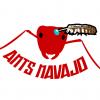- Formiculture.com
- Forums
- Gallery
- Members
- Member Map
- Chat

“Pasteurizing” Test Tube Setups?
Started By
Martialis
, Nov 17 2019 1:41 PM
7 replies to this topic
#1
 Offline
-
Posted November 17 2019 - 1:41 PM
Offline
-
Posted November 17 2019 - 1:41 PM
Just an idea I had and was wondering your thoughts on it. Obviously, it isn’t meant as the sole method for mold/bacteria in test tubes.
Anyways, heat kills mold and bacteria at temperatures over 60°C (140°F). As such, test tube setups could be—theoretically—heat treated in a method similar to pasteurization. This would likely eliminate many test tube problems caused by dirty “assembly” and sterilize them, thereby making the tubes much safer for ants.
Basically, the process is as follows:
• Make test tube setups with heat resistant plastic or glass. (Remove the outside cotton, obviously)
• Add said setups to a (preferably temperature controlled/monitored) heat bath at around 60-70°C (140-160°F). Leave them there for 15-30 minutes (longer for lower temperatures).
• Remove the test tubes from the bath and set them inside a dry, preferably air tight container to cool slowly to room temperature.
• Keep the tubes stored in the container until they’re needed. This ideally should prevent much of anything from getting into the tubes.
Thoughts?
Anyways, heat kills mold and bacteria at temperatures over 60°C (140°F). As such, test tube setups could be—theoretically—heat treated in a method similar to pasteurization. This would likely eliminate many test tube problems caused by dirty “assembly” and sterilize them, thereby making the tubes much safer for ants.
Basically, the process is as follows:
• Make test tube setups with heat resistant plastic or glass. (Remove the outside cotton, obviously)
• Add said setups to a (preferably temperature controlled/monitored) heat bath at around 60-70°C (140-160°F). Leave them there for 15-30 minutes (longer for lower temperatures).
• Remove the test tubes from the bath and set them inside a dry, preferably air tight container to cool slowly to room temperature.
• Keep the tubes stored in the container until they’re needed. This ideally should prevent much of anything from getting into the tubes.
Thoughts?
- Boog likes this
Spoiler
#2
 Offline
-
Posted November 17 2019 - 3:27 PM
Offline
-
Posted November 17 2019 - 3:27 PM
I believe a lot of the mold issues people have in test tube setups is caused by not properly cleaning/sterilizing them before setting them up. Even handling the cotton ball with your hands introduces microorganisms. Heat is probably the easiest method but I use 91% isopropyl alcohol to swish around and clean the tubes for a couple minutes wearing disposable gloves, use the gloves or a paper towel to handle the cottonball. I also fill the tube with bottled spring water using a syringe I sterilized with alcohol too. After using the alcohol, I let it evaporate for a bit and quickly rinse with water before using though.
I haven't had any crazy mold growth in my test tube setups, just the slow buildup that the ants accrue. Get your test tubes setups sterilized for the best results, we should say.
- drtrmiller and Martialis like this
My Youtube channel: Ants Navajo Keeping- Camponotus pennsylvanicus, Tapinoma sessile x 2, Pheidole sp x 2
"We may be witnesses to a Biblical prophecy come true - 'And there shall be destruction and darkness come upon creation and the beasts shall reign over the earth.'" - Dr. Harold Medford
#3
 Offline
-
Posted November 17 2019 - 5:39 PM
Offline
-
Posted November 17 2019 - 5:39 PM
my guess is the ants cause the most of the garbage.
#4
 Offline
-
Posted November 17 2019 - 7:39 PM
Offline
-
Posted November 17 2019 - 7:39 PM
my guess is the ants cause the most of the garbage.
This was to solve some of the problems microorganisms feeding on their detritus cause.
Spoiler
#5
 Offline
-
Posted November 17 2019 - 8:42 PM
Offline
-
Posted November 17 2019 - 8:42 PM
I put my glass tubes in an oven or blast them with a blow torch to truly sterilize them, and then use distilled water and sterile cotton balls, albeit with non-sterile nitrile gloves and no clean room. The cotton will never mold like this if you don't add ants.
But tons of contamination is introduced the moment ants are added, and so all these steps are mostly pointless overkill.
- Martialis, Somethinghmm and Boog like this
byFormica® is the manufacturer of the iconic nectar feeders and Sunburst Ant Nectar.
byFormica ant products always deliver consistent performance, convenience,
and reliability, making them among the most beloved ant foods and kit enjoyed by
ant keeping enthusiasts worldwide. For more information, visit www.byFormica.com.
#6
 Offline
-
Posted November 18 2019 - 3:34 PM
Offline
-
Posted November 18 2019 - 3:34 PM
my guess is the ants cause the most of the garbage.
This was to solve some of the problems microorganisms feeding on their detritus cause.
what I mean is that the ants probably carry in a lot of fungus and bacteria
- Martialis likes this
#7
 Offline
-
Posted November 18 2019 - 4:02 PM
Offline
-
Posted November 18 2019 - 4:02 PM
I've personally found that nylon imitation cotton balls simply didn't mold, or at least molded much less than actual cotton. They don't seem to be commonly sold in my part of the country anyways. They worked the same otherwise.
Edited by Reacker, November 18 2019 - 4:03 PM.
- Martialis, ANTdrew and Boog like this
#8
 Offline
-
Posted November 27 2019 - 8:44 AM
Offline
-
Posted November 27 2019 - 8:44 AM
I think many of the same precautions. I clean the tubes when I vacate a queen from them, and then just store them in a plastic bag. Because I always sterilize my tubes just before placing a new queen in them. I use a large plastic glass, one from most of your drive-through restaurants will work. I fill it almost to the top with water and put it in the microwave for five minutes. This will bring it just short of a boil, so be careful when picking it up. Any utensil/tool that I am going to use, I also dip into the glass to sterilize it. The intention is to use only clean materials to do this, including washing my hands.
I use bottled water for my test tube set ups. I also make sure I’m working on a clean surface, so that I am less likely to introduce anything to the cotton balls. And if needed I have a pump dispenser of hand sanitizer close by.
Later, in an effort to not introduce anything into their formicarium/tube, I periodically use the same sterilization method for any tools. By this, I mean tweezers, eyedroppers, syringes and any other tool I may have to use.
Sent from my iPad using Tapatalk
I use bottled water for my test tube set ups. I also make sure I’m working on a clean surface, so that I am less likely to introduce anything to the cotton balls. And if needed I have a pump dispenser of hand sanitizer close by.
Later, in an effort to not introduce anything into their formicarium/tube, I periodically use the same sterilization method for any tools. By this, I mean tweezers, eyedroppers, syringes and any other tool I may have to use.
Sent from my iPad using Tapatalk
0 user(s) are reading this topic
0 members, 0 guests, 0 anonymous users

















